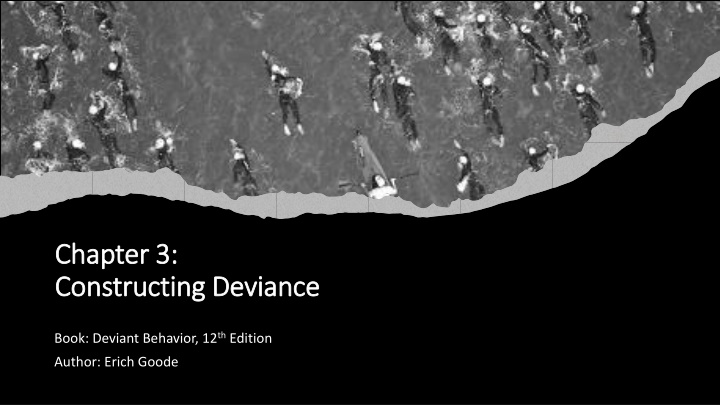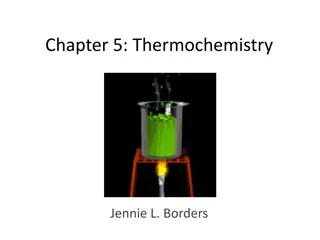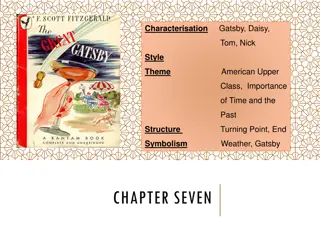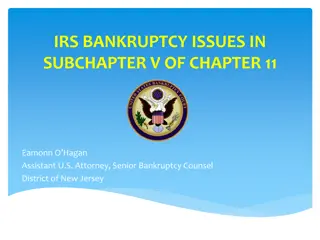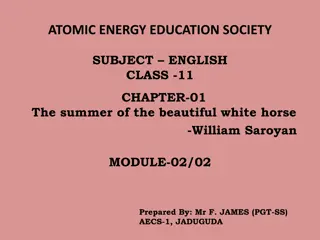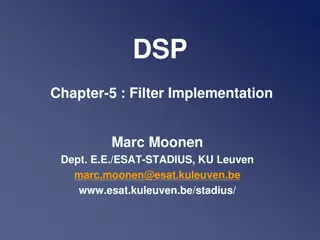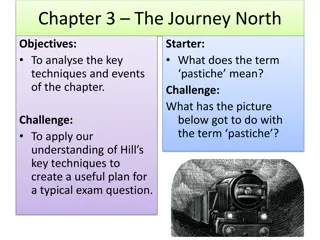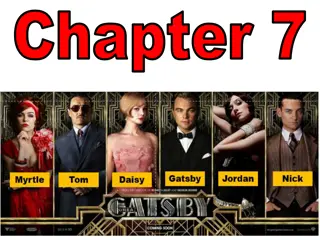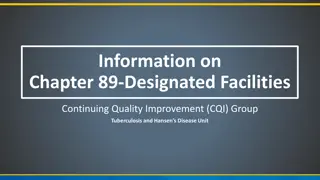Chapter 3: Chapter 3:
In this insightful book chapter, delve into the concept of deviance and how societies define and react to behaviors, beliefs, and traits. Explore constructionist perspectives, formal and informal social control, and Symbolic Interactionism. Understand how norms and laws evolve and the role of societal agents in social control.
Download Presentation

Please find below an Image/Link to download the presentation.
The content on the website is provided AS IS for your information and personal use only. It may not be sold, licensed, or shared on other websites without obtaining consent from the author.If you encounter any issues during the download, it is possible that the publisher has removed the file from their server.
You are allowed to download the files provided on this website for personal or commercial use, subject to the condition that they are used lawfully. All files are the property of their respective owners.
The content on the website is provided AS IS for your information and personal use only. It may not be sold, licensed, or shared on other websites without obtaining consent from the author.
E N D
Presentation Transcript
Chapter 3: Chapter 3: Constructing Deviance Constructing Deviance Book: Deviant Behavior, 12thEdition Author: Erich Goode
Getting Started: Key Questions Getting Started: Key Questions How does a society create deviance by thinking about behavior, beliefs, and physical traits in certain ways? How do certain acts, beliefs, and traits come to be considered acceptable or deplorable in some societies versus others, in certain social circles versus others? How do societies ascertain the appropriate punishments for wrongdoing? How and why do societies devise rules? What is the role of learning or socialization in social control? Who are the major agents of social control?
What is What is Constructionism? Constructionism?
Constructionists Ask Constructionists Ask How is deviance conceptualized, imagined, defined, and represented? What are some negative examples of negative reactions to what society considers wrongfulness or deviance? How do norms and laws arise, and to whom do they apply?
Constructing Deviance Constructing Deviance
Formal and Informal Social Control Formal and Informal Social Control Rules themselves are universal, and the punishment of rule violations is universal, but what the rules and the punishments are is variable. Formal Official (rational-legal) efforts to enforce conformity. Informal Unofficial, interpersonal interactions that convey approval or disapproval.
Constructionist Perspectives Constructionist Perspectives Symbolic Interactionism and Labeling Theory Conflict Theory Feminist Theory Controlology
Symbolic Symbolic interactionism interactionism
Labeling Theory Labeling Theory Labeling theory (or the Labeling Perspective) took the emphasis away from the person who attracts a deviant label and toward the labelers of deviance. Frank Tannenbaum (1893-1969) is considered the grandfather of the interactionist/labeling perspective toward deviance. Author of Crime and the Community (1938), Tannenbaum was the first to stress the importance of the labeling process. Edwin Lemert (1912-1996), author Social Pathology (1951) underplayed the causality of behavior that comes to be labeled as deviant and stressed the distinction between primary and secondary deviation.
Elements of Labeling Theory Elements of Labeling Theory Audience Assigns deviant labels. The Stigmatization Process: An audience first labels an act, belief, or condition deviant Then labels the individual deviant Reflexivity Viewing ourselves through the eyes of others. The Inner Worlds of Deviance The collectivities that are labeled as deviant create a subculture that differ from the mainstream. Neutralization The process or attempt at justifying, excusing, contextualizing the enactment of the behavior or holding the beliefs that are negatively judged.
The Stickiness of Labels The Stickiness of Labels
Concepts Related to the Labeling Perspective Modified Labeling Theory Perceptions of mental patients dangerousness and caregiver avoidance make the condition more serious . Cumulative disadvantage Compound effects of criminal sanctions, coupled with the deviant label, to disenfranchise over the life course. Negative Credentials - Official markers that restrict access and opportunity rather than enabling them.
Labeling Theory Labeling Theory Today Today
Conflict Theory Conflict Theory
Feminist Theory Feminist Theory
Androcentrism in the Study of Deviance Consideration of Women in Criminology and Deviance prior to 1970s: Women were largely understudied, and often omitted. Women s deviance was studied as specialized deviance. Victimization of women (especially rape, domestic assault, and sexual harassment) was underplayed
Controlology Controlology
Controlologys Central Concepts Controlology s Central Concepts Panopticon A prison designed for total surveillance of many by few. Michel Foucault used the panopticon as a metaphor, claiming society has become transcarceral. The Carceral Archipelago Surveillance and control has shifted from the penal institution to the entire social body. Foucault s Panoptic Principles Knowledge is power (the power to control). Power comes through surveillance. Surveillance is internalized.
Summary Summary
